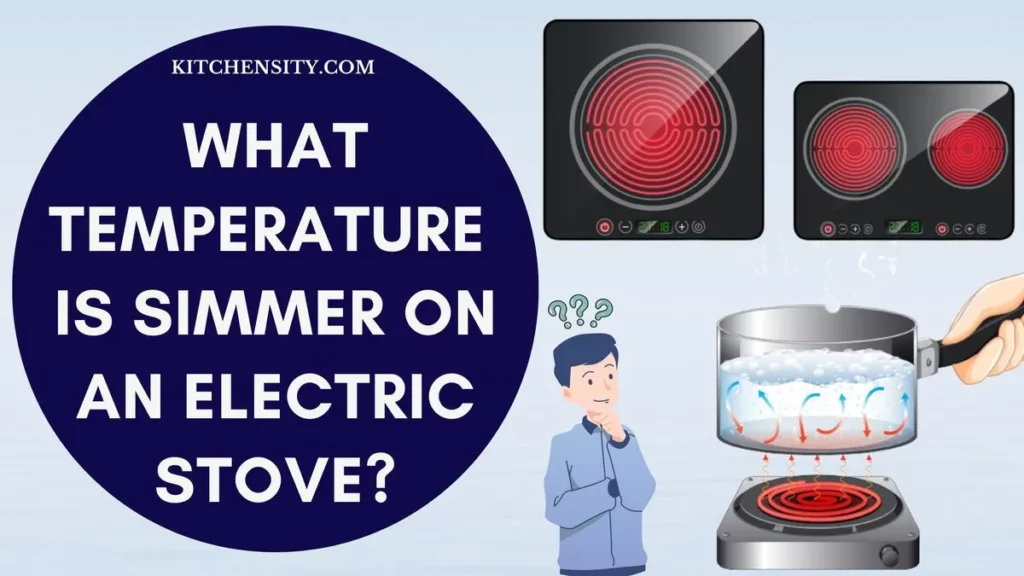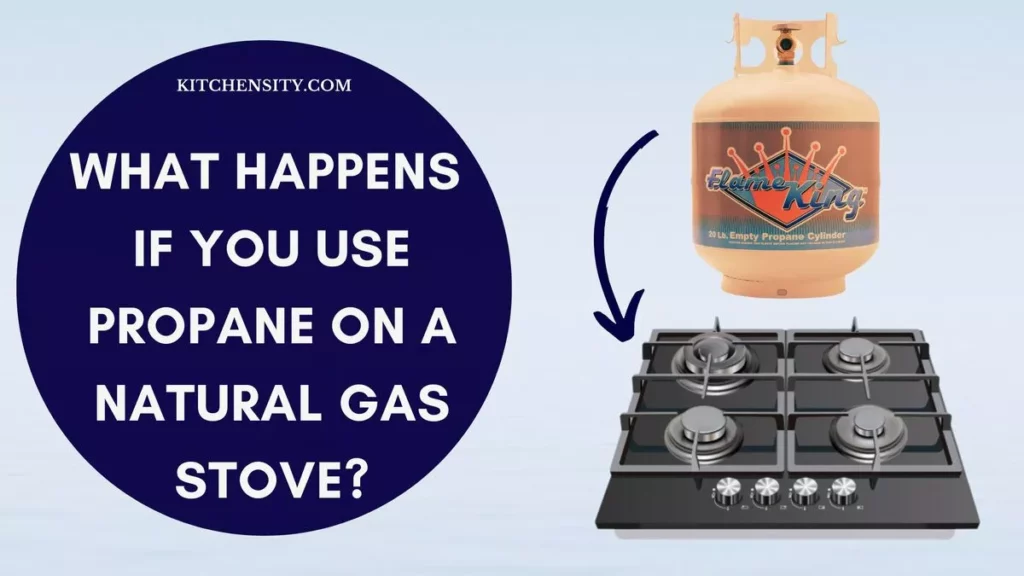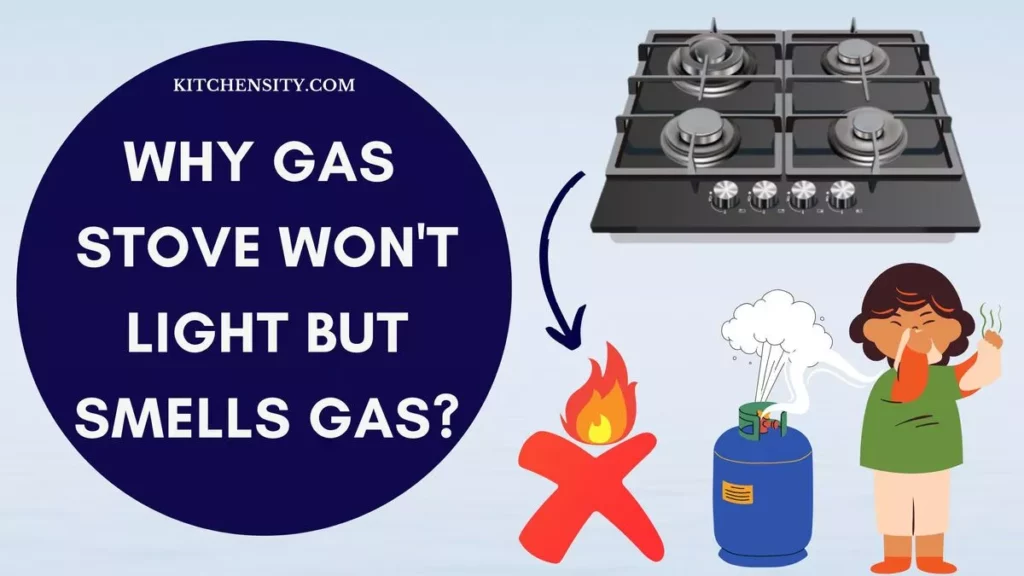Cleaning your gas stove is an essential household chore, but it can sometimes lead to unexpected issues, such as a gas stove igniter not sparking after cleaning.
If you’re facing this problem, don’t worry; we’ve got you covered. In this comprehensive guide, we will walk you through the steps to troubleshoot and fix this common issue so that you can get your stove back in working order.
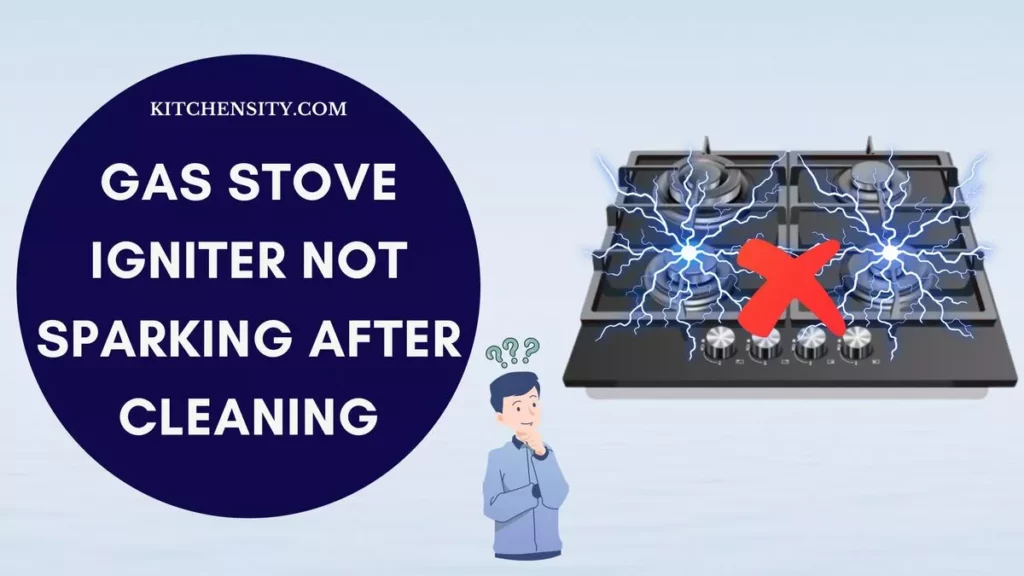
Table of Contents
- 1 The Gas Stove Igniter Not Sparking After Cleaning – Why?
- 2 Understanding The Gas Stove Igniter
- 3 How To Fix Gas Stove Igniter Not Sparking After Cleaning? Step-by-step Guide
- 4 How To Fix Gas Stove Igniter Not Clicking?
- 5 How Do I Know If My Igniter Is Bad On My Gas Stove?
- 6 Troubleshooting Other Igniter Issues
- 7 Upgrading Your Igniter
- 8 Preventive Maintenance For Gas Stove’s Igniter
- 9 Safety Considerations
- 10 Final Thoughts: The Gas Stove Igniter Not Sparking After Cleaning
- 11 FAQs (Frequently Asked Questions)
- 11.1 Why Is My Stove Igniter Not Sparking?
- 11.2 Is It Safe To Clean The Gas Stove Igniter Myself?
- 11.3 What Can Cause Moisture Buildup Around The Igniter?
- 11.4 Can I Use Any Cleaning Agent On The Igniter?
- 11.5 What Should I Do If The Igniter Still Doesn’t Work After Cleaning?
- 11.6 How Often Should I Clean The Gas Stove Igniter?
The Gas Stove Igniter Not Sparking After Cleaning – Why?
If your gas stove igniter isn’t sparking after cleaning, it’s likely due to moisture, debris, or wiring issues. First, ensure the igniter and its surroundings are completely dry. Then, double-check the wiring connections and clean the igniter tip with isopropyl alcohol.
If the problem persists, consider professional assistance or igniter replacement.
Also Read – Why Is My Gas Stove Not Clicking?
Refer below for a proper step-by-step guide to fix the issue.
Understanding The Gas Stove Igniter
Before diving into the troubleshooting steps, let’s first understand how a gas stove igniter works. This knowledge will help you identify the root cause of the problem.
What Is A Gas Stove Igniter?
A gas stove igniter is a vital component of your gas range that plays a crucial role in starting the combustion process. It’s responsible for creating the spark needed to ignite the gas when you turn on a burner. This spark ignites the gas, which in turn generates the flame necessary for cooking.
Gas stove igniters come in two primary types:
- Electric Igniters: These are the most common type in modern gas stoves. They use electrical current to create a spark when you turn the knob to activate a burner.
- Piezoelectric Igniters: Typically found in older gas stoves or portable camping stoves, piezoelectric igniters generate a spark through mechanical means. When you press the ignition button, it creates a small electric charge that sparks and lights the gas.
Also Read – Why Gas Stove Won’t Light But Smells Gas?
How Does A Gas Stove Igniter Work?
Understanding the inner workings of a gas stove igniter is essential to troubleshoot issues effectively. Here’s a simplified explanation of the process:
- Electric Igniters:
- When you turn the burner knob, an electrical current flows to the igniter.
- This current passes through a wire or electrode, creating a spark at the igniter tip.
- The spark travels to the gas nozzle, where it ignites the released gas.
- The flame continues to burn as long as you keep the knob turned on.
- Piezoelectric Igniters:
- When you press the ignition button, it exerts mechanical pressure on a piezoelectric crystal.
- This pressure generates a small electric charge.
- The charge is conducted to a wire or electrode, creating a spark at the igniter tip.
- The spark, as in the electric igniter, ignites the gas, and the burner starts working.
Also Read – How To Fix A Yellow Flame On A Gas Stove?
Common Reasons For Igniter Failure
Now that we’ve covered the basics let’s explore some common reasons why a gas stove igniter might fail:
- Grease And Food Debris: Over time, grease, food particles, and cooking residue can accumulate on the igniter’s tip. This buildup can insulate the electrode, preventing it from generating a spark. Cleaning the igniter tip is a straightforward solution in such cases.
- Moisture Buildup: Moisture can also impede the spark generation process. If your kitchen is particularly humid, or if you’ve spilled liquid on the stove, moisture might accumulate around the igniter. Drying out the igniter is usually sufficient to resolve this issue.
- Damaged Igniter Components: Like any mechanical or electrical part, gas stove igniters can wear out or become damaged over time. Worn-out electrodes or faulty wiring can lead to igniter failure. In such cases, replacement might be necessary.
Also Read – Orange Flame On The Gas Stove: Causes And Fixes
How To Fix Gas Stove Igniter Not Sparking After Cleaning? Step-by-step Guide
Now that you have a basic understanding of how a gas stove igniter functions let’s move on to the troubleshooting steps.
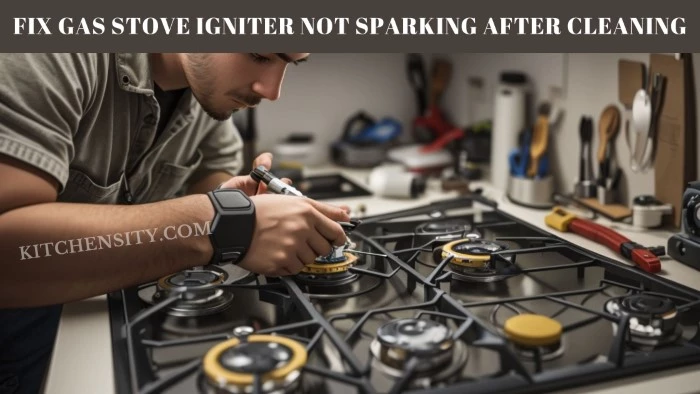
Here’s a step-by-step guide on how to fix a gas stove igniter that’s not sparking after cleaning:
Step 1: Safety First
- Turn Off the Gas Supply: Before you begin, ensure your safety by turning off the gas supply to your stove. Locate the gas shut-off valve behind or beneath your stove and turn it clockwise until it’s fully closed. This step is crucial to prevent any gas leaks while you work on the igniter.
- Ensure Adequate Ventilation: Make sure your kitchen is well-ventilated. Open windows or doors to allow any lingering gas fumes to dissipate. This precaution further enhances safety during the repair process.
Step 2: Cleaning The Igniter
- Gather The Necessary Tools: You’ll need a few basic tools for this step:
- A small, soft-bristle brush or a toothbrush
- Isopropyl alcohol
- A soft cloth or paper towel
- Cleaning The Igniter Tip:
- Locate the igniter tip. It’s usually a small metal or ceramic piece near the burner.
- Dip the soft-bristle brush or toothbrush in isopropyl alcohol.
- Gently scrub the igniter tip to remove any grease, food residue, or debris. Be cautious not to damage the igniter during this process.
- Wipe the tip clean with a soft cloth or paper towel.
- Cleaning The Igniter Wiring:
- Trace the wires connected to the igniter back to their source. Ensure they are securely connected.
- If the wires appear damaged or disconnected, carefully reattach or replace them if necessary.
- Wipe down the wiring and connections with a clean, dry cloth.
Also Read – Brass Burners Vs Cast Iron Burners
Step 3: Checking For Moisture
- Identifying Moisture Sources: Check for any sources of moisture around the igniter. Moisture can inhibit the spark-generation process.
- Drying Out The Igniter:
- If you find moisture, use a hairdryer on a low, cool setting to gently blow air around the igniter area. This will help evaporate any lingering moisture.
- Allow the igniter and its surroundings to air dry for a while before proceeding.
Step 4: Inspecting For Damage
- Visual Inspection: Carefully inspect the igniter and its components for visible damage. Look for any cracks, corrosion, or loose parts. If you notice any issues, consider replacing the damaged parts.
- Testing The Igniter:
- Turn on the gas supply and attempt to ignite the burner.
- Observe whether the igniter now produces a spark and ignites the gas. If it does, the problem may have been resolved.
Step 5: Reassembly And Testing
- Reassembling The Stove:
- If you have to disassemble any parts of the stove for inspection or cleaning, make sure to reassemble them properly and securely.
- Double-check that all wires are connected as they should be.
- Testing The Igniter Spark:
- Turn on the gas supply.
- Try to ignite the burner again.
- If the igniter now sparks and lights the gas, your troubleshooting and cleaning efforts have been successful.
After following these steps, you should have resolved the issue of your gas stove igniter not sparking after cleaning. Remember to prioritize safety at all times when working with gas appliances. If the problem persists or seems too complex to handle on your own, it’s advisable to seek professional assistance to ensure the continued safe operation of your gas stove.
Also Read – Do Gas Stoves Need To Be Vented?
How To Fix Gas Stove Igniter Not Clicking?
If your gas stove igniter is not clicking, there are a few things you can do to try to fix it. Here is a step-by-step solution:
- Step 1: Check The Batteries: The first thing you should check is the batteries in the igniter. If the batteries are dead, the igniter will not click. Replace the batteries with new ones and see if that fixes the problem.
- Step 2: Check The Wiring: If the batteries are not the problem, check the wiring to the igniter. Make sure that the wires are properly connected and that there are no breaks in the wiring. If there are any breaks in the wiring, repair them or replace the wires.
- Step 3: Clean The Igniter: Sometimes, the igniter can get dirty and this can prevent it from clicking. Clean the igniter with a wire brush or a toothpick. Be careful not to damage the igniter when cleaning it.
- Step 4: Check The Igniter Rod: The igniter rod is the metal rod that glows red when you press the igniter button. If the igniter rod is broken or damaged, it will not click. To check the igniter rod, remove it from the gas stove and inspect it for any signs of damage. If the igniter rod is broken or damaged, it will need to be replaced.
- Step 5: Check The Gas Valve: Make sure that the gas valve is turned on and that there is gas flowing to the stove. If there is no gas flowing to the stove, check the gas line to make sure that it is not clogged.
- Step 6: Check The Gas Line: The gas line is the pipe that supplies gas to the gas stove. If the gas line is clogged or damaged, the igniter will not click. To check the gas line, make sure that it is clear and free of any obstructions. If the gas line is clogged or damaged, it will need to be repaired or replaced.
- Step 7: Replace The Igniter: If you have tried all of the above steps and the igniter is still not clicking, you may need to replace the igniter. You can purchase a new igniter at most hardware stores.
Additional Tips:
- If you are not comfortable working with electrical wiring, you should call a qualified technician to fix the igniter.
- Be careful not to overtighten the igniter when you are installing it. Overtightening the igniter can damage the igniter and prevent it from working properly.
- If you have a gas stove with multiple burners, try lighting one of the other burners. If one of the other burners lights, the problem is likely with the igniter on the burner that is not lighting.
- If you have tried all of the above steps and the igniter is still not clicking, you may need to call a qualified technician to fix the problem.
If you are following these steps carefully, you should be able to fix a gas stove igniter that is not clicking. However, if you are not comfortable working with electrical wiring or if you are still having trouble getting the igniter to work, you should call a qualified technician.
Also Read – How To Properly Vent A Gas Stove?
How Do I Know If My Igniter Is Bad On My Gas Stove?
Determining if the igniter on your gas stove is bad is essential for maintaining the appliance’s functionality and safety. Here are some common signs to help you identify a faulty gas stove igniter:
- No Spark Or Clicking Sound: When you turn the burner knob to ignite the gas, you should hear a distinct clicking sound and see a spark at the igniter. If there’s no clicking sound or spark, it’s a clear indication that the igniter may be faulty.
- Delayed Ignition: If there is a noticeable delay between turning the knob and the burner igniting, this could indicate a problem with the igniter. Normally, the ignition should be nearly instantaneous.
- Weak Or Inconsistent Spark: If you notice that the spark from the igniter is weak or sporadic, it may not be generating enough energy to ignite the gas properly. This could be a sign of a failing igniter.
- Gas Smell: If you smell gas when attempting to ignite the burner but it doesn’t light, immediately turn off the gas supply and ventilate the area. A faulty igniter that fails to ignite the gas can lead to a dangerous gas buildup.
- Visual Inspection: Examine the igniter itself for visible signs of damage, such as cracks, corrosion, or loose wires. Physical damage is a clear indication that the igniter needs replacement.
- Checking The Wiring: Sometimes, the issue may not be with the igniter itself but with the wiring leading to it. Ensure that the wires connected to the igniter are secure and undamaged. Loose or damaged wiring can also cause ignition problems.
- Using A Multimeter: If you have access to a multimeter, you can test the continuity of the igniter’s electrical circuit. A reading of infinite resistance indicates a bad igniter, while a reading close to zero ohms suggests it’s working correctly.
- Consult The Manufacturer’s Manual: Refer to your gas stove’s manufacturer’s manual for troubleshooting guidelines and specific diagnostic tests related to the igniter. The manual may provide valuable insights into identifying igniter issues.
- Professional Inspection: If you’re uncertain about the condition of your gas stove’s igniter or if you’ve tried basic troubleshooting without success, it’s advisable to seek professional assistance. Gas appliances can be dangerous to work on if you’re not experienced, so a trained technician can safely diagnose and replace the faulty igniter.
Remember that safety should always be your top priority when dealing with gas appliances. If you suspect a gas leak or encounter a strong gas odor, immediately turn off the gas supply, ventilate the area, and contact a professional technician or your gas utility provider for assistance.
Also Read – Why Electric Stoves Take Forever To Boil Water?
Troubleshooting Other Igniter Issues
Sometimes, the problem with your gas stove igniter might not be related to cleaning. It could be due to various other factors. Here are some additional troubleshooting steps:
Gas Supply Issues
- Check Gas Supply: Ensure that the gas supply to your stove is sufficient. Sometimes, low gas pressure can affect the igniter’s performance.
- Gas Valve Inspection: Examine the gas valve that controls the flow of gas to the burner. If it’s faulty or clogged, it can affect ignition.
Control Knob Problems
- Knob Alignment: Make sure the control knob aligns correctly with the ignition position. If it’s misaligned, the igniter might not spark.
- Knob Replacement: If the knob is damaged or worn out, consider replacing it. A faulty knob can hinder the ignition process.
Also Read – How Hot Do Electric Stove Burners Get?
Upgrading Your Igniter
If you’ve been facing persistent issues with your gas stove igniter, it might be worth considering an upgrade to improve the reliability and efficiency of your appliance. Here are some options and details to consider:
Modern Igniter Technology
- Electronic Ignition Systems: One of the most significant advancements in gas stove technology is the introduction of electronic ignition systems. Unlike traditional pilot lights, electronic ignition systems are more efficient and reliable. Here’s why you might want to consider this upgrade:
- Efficiency: Electronic ignitions use electricity to create sparks, igniting the gas precisely when needed. This eliminates the need for a continuously burning pilot light, which can save energy and reduce gas consumption.
- Reliability: Electronic ignition systems are known for their dependability. They consistently provide a spark to ignite the gas, reducing the chances of failed ignitions.
- Safety: Electronic ignitions are considered safer because there’s no continuously burning flame. This means that if the flame goes out accidentally, the gas supply is automatically shut off, minimizing the risk of gas leaks.
- Convenience: With electronic ignition, you won’t need to manually light the stove using a match or lighter. Simply turn the knob, and the system will do the rest.
- Variety: Electronic ignition systems come in various forms, including intermittent pilot ignition (IPI) and direct spark ignition (DSI). IPI systems use a spark to light a pilot flame only when needed, while DSI systems spark directly at the burner.
- Energy Savings: The absence of a pilot light means that there’s no wasted gas when the stove is not in use, leading to potential energy savings over time.
- Professional Installation: Upgrading to an electronic ignition system typically requires professional installation. A trained technician can safely install the new system, ensuring it meets safety standards and functions correctly.
- Cost Consideration: While upgrading to an electronic ignition system can enhance the performance and safety of your gas stove, it’s essential to consider the initial investment. Electronic ignition systems may be more expensive upfront, but the long-term benefits, including energy savings and increased reliability, can outweigh the cost.
- Research And Model Selection: When considering an upgrade, research different gas stove models that offer electronic ignition systems. Look for reputable brands and read reviews to ensure you’re choosing a reliable and efficient appliance that suits your needs.
By upgrading to modern igniter technology, such as electronic ignition systems, you can enjoy a more efficient, reliable, and safe cooking experience while potentially reducing your energy consumption and costs in the long run.
However, always consult with a professional technician or installer to ensure a safe and proper upgrade process.
Also Read – Gas Stove Leaking Gas From Burner
Preventive Maintenance For Gas Stove’s Igniter
Preventive maintenance is a crucial aspect of ensuring the longevity and efficient performance of your gas stove’s igniter and the entire appliance. By proactively taking care of your stove and its components, you can prevent potential issues, reduce the risk of breakdowns, and enhance safety.
Here are some preventive maintenance for your gas stove:
1. Regular Cleaning Routine
- Creating A Cleaning Schedule: Establishing a routine cleaning schedule is the foundation of preventive maintenance for your gas stove. Regular cleaning helps prevent the buildup of grease, food debris, and other substances that can affect the igniter’s performance. Consider the following tips:
- Frequency: Aim to clean your gas stove at least once every few months or as needed. High-frequency cooking areas may require more frequent cleaning.
- Cleaning Supplies: Use mild cleaning agents or isopropyl alcohol to clean the igniter and surrounding components. Avoid abrasive materials that can cause damage.
- Thorough Cleaning: Pay special attention to the igniter tip and burner ports. Ensure that these areas are free from any obstructions or buildup.
- Cleaning Techniques:
- Disassemble Safely: When cleaning, make sure to turn off the gas supply and allow the stove to cool. Safely disassemble removable parts for thorough cleaning.
- Gentle Cleaning: Use a soft-bristle brush, toothbrush, or cloth for cleaning. Be gentle to avoid damaging delicate components like the igniter.
- Dry Completely: Ensure that all parts are thoroughly dry before reassembling the stove. Moisture can affect the igniter’s performance.
Also Read – How To Convert A Natural Gas Stove To Propane?
2. Preventing Spills And Splatters
- Cooking Safely: Take precautions to prevent spills and splatters that can reach the igniter:
- Use Cookware With Lids: When cooking, use cookware with lids to minimize splatter and contain spills.
- Regular Monitoring: Keep an eye on your cooking to prevent boil-overs and spills that can affect the burner and igniter.
- Immediate Cleanup: Promptly clean up any spills or splatters to prevent them from hardening and becoming difficult to remove.
3. Regular Component Inspection
- Visual Inspection: Periodically inspect the igniter and its surrounding components for any signs of damage, wear, or corrosion. Look for loose wires or connections. If you notice any issues, address them promptly to prevent further damage.
- Testing The Ignition: Test the igniter’s performance periodically by turning on the burner. Ensure it sparks consistently and ignites the gas without delays.
4. Professional Maintenance
- Annual Checkup: Consider scheduling an annual maintenance checkup with a qualified technician. They can perform a comprehensive inspection of your gas stove, including the igniter, gas lines, and safety features, to ensure everything is in good working condition.
- Timely Repairs: If you encounter any problems with your gas stove, including issues with the igniter, don’t delay repairs. Promptly address any malfunctions or unusual behavior to prevent further complications.
By incorporating these preventive maintenance practices into your routine, you can significantly extend the lifespan of your gas stove’s igniter, minimize the risk of unexpected breakdowns, and enjoy safe and efficient cooking experiences for years to come.
Also Read – Do Gas Stoves Turn Off Automatically?
Safety Considerations
Safety is paramount when dealing with gas stoves and their igniters. By following essential safety guidelines, you can protect yourself, your home, and your loved ones from potential hazards associated with gas appliances.
Here are some safety considerations:
1. Gas Leak Detection
- Recognizing Gas Odor: One of the most crucial aspects of gas stove safety is the ability to recognize the distinctive odor of natural gas. Natural gas is naturally odorless, but utility companies add a foul-smelling odorant called mercaptan to make gas leaks easily detectable.
- Immediate Action: If you detect a strong, unpleasant gas odor in your kitchen, take immediate action:
- Turn Off The Gas Supply: Locate the gas shut-off valve behind or beneath your stove and turn it clockwise to shut off the gas supply. This step is critical to prevent gas buildup.
- Ventilate The Area: Open windows and doors to allow fresh air to enter your kitchen. This helps disperse any accumulated gas fumes.
- Avoid Open Flames: Do not light matches, use lighters, or operate electrical switches, including light switches, as they can create sparks that may ignite the gas.
- Evacuate Safely: If the gas odor is strong and persistent, evacuate your home immediately and call your gas utility provider and emergency services from a safe location.
Also Read – How Long Can You Leave An Electric Stove On?
2. Carbon Monoxide Awareness
- Understanding Carbon Monoxide (CO): Carbon monoxide (CO) is a colorless, odorless, and tasteless gas that can be produced when gas appliances, such as a malfunctioning gas stove, do not burn fuel completely. CO is highly toxic and poses a severe health risk.
- Installing Co Detectors: To enhance safety, install carbon monoxide detectors in your home, especially near the kitchen and sleeping areas. These devices can alert you to the presence of CO, allowing you to take swift action.
- CO Symptoms: Familiarize yourself with the symptoms of carbon monoxide poisoning, which may include dizziness, headache, nausea, weakness, confusion, and flu-like symptoms. If you or your family members experience these symptoms and suspect CO exposure, seek fresh air immediately and call emergency services.
3. Regular Maintenance And Professional Inspection
- Annual Professional Checkup: Consider scheduling an annual maintenance checkup with a qualified technician to inspect your gas stove, including the igniter, gas lines, and safety features. Professional inspections help ensure that your appliance is in optimal working condition and that any potential issues are addressed promptly.
- Timely Repairs: If you notice any problems with your gas stove, including issues with the igniter or burner, avoid using the appliance until it’s repaired. Delaying repairs can lead to safety hazards.
- Gas Leak Testing: During a professional inspection, technicians can perform gas leak tests to identify and address any potential gas leaks in the gas lines or connections.
- Emergency Contact Information: Keep contact information for your local gas utility provider, emergency services, and a qualified technician readily available in case of a gas-related emergency.
Also Read – Master Medium Heat On A Stove
Final Thoughts: The Gas Stove Igniter Not Sparking After Cleaning
In the world of gas stoves, a non-sparking igniter after cleaning can be a frustrating puzzle. But fear not, as this article has unraveled the mystery for you.
We’ve explored what a gas stove igniter is, how it operates, and why it might misbehave. With a step-by-step guide, we’ve shown you how to fix it when it’s not sparking after cleaning and even when it’s not clicking.
But this article goes beyond quick fixes. It’s a reminder of the importance of preventive maintenance. Regular cleaning routines, careful cooking habits, and keeping an eye out for issues are your allies in preventing problems before they start.
Safety, too, has been a constant theme. Recognizing gas odors, understanding carbon monoxide, and seeking professional help when needed – these are the safety precautions that can’t be emphasized enough.
So, in conclusion, you’re now well-armed with knowledge. Your gas stove and its igniter hold no secrets for you anymore. With safety in mind and these insights at your disposal, you’re ready to cook up a storm, knowing you can handle any igniter hiccup that comes your way.
Happy Cooking!
Also Read – Should A Slow Cooker Simmer On Low?
FAQs (Frequently Asked Questions)
-
Why Is My Stove Igniter Not Sparking?
Your stove igniter may not be sparking due to moisture or debris, so ensure it’s dry and clean. If the issue persists, consult a professional or consider igniter replacement.
-
Is It Safe To Clean The Gas Stove Igniter Myself?
Yes, it’s safe to clean the gas stove igniter as long as you follow safety precautions and turn off the gas supply before doing so.
-
What Can Cause Moisture Buildup Around The Igniter?
Moisture can accumulate due to high humidity, spillage, or cleaning the stove with excess water.
-
Can I Use Any Cleaning Agent On The Igniter?
It’s best to use a mild cleaning agent or isopropyl alcohol to clean the igniter. Avoid using abrasive materials.
-
What Should I Do If The Igniter Still Doesn’t Work After Cleaning?
If cleaning doesn’t resolve the issue, you may need to replace the igniter or seek professional help.
-
How Often Should I Clean The Gas Stove Igniter?
Regular maintenance is essential. Aim to clean the igniter at least once every few months or as needed to prevent buildup.
🔧 Stove Expert | 🔥 Gas Guru | 🏠 DIY Enthusiast | 🎨 Painter Extraordinaire
John Davis is your go-to source for all things stoves, from expert repairs to maintenance tips. With a deep understanding of gas systems, including natural and propane, John ensures your kitchen stays cooking safely. His passion for DIY home and kitchen projects shines through his stunning paint transformations. Trust John to bring warmth and functionality to your home, one stove at a time.

